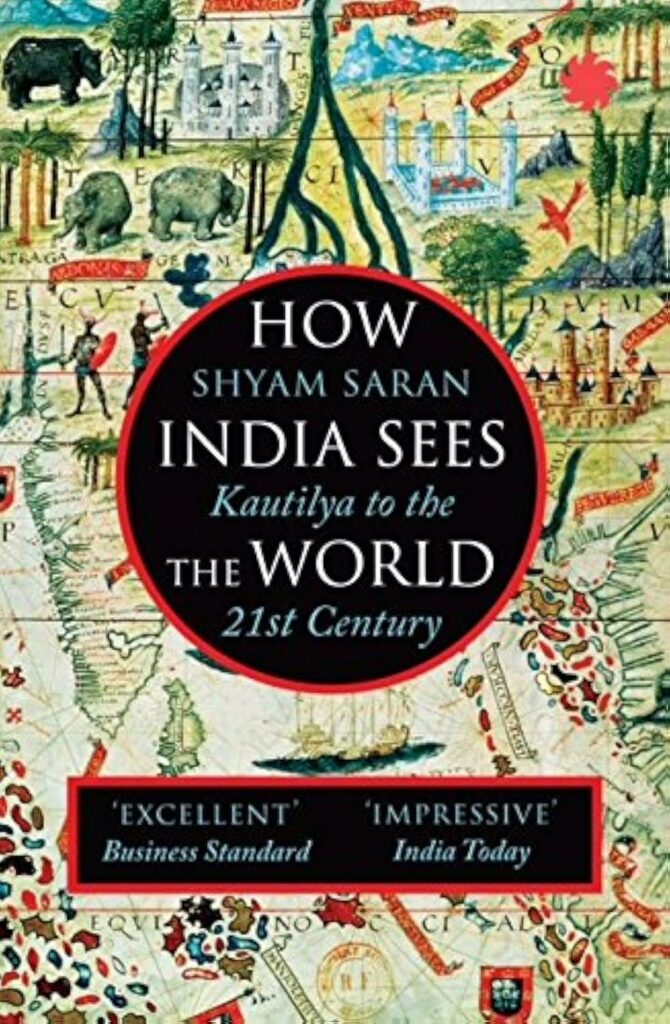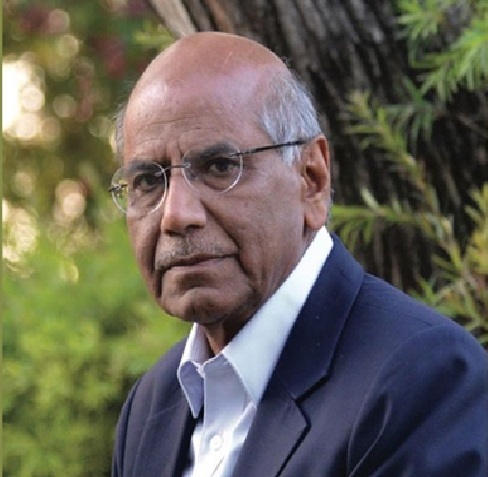
Former Diplomat Shyam Sharan, in his book “How India Sees the World”, connects India’s ancient strategic thought with modern diplomacy, referencing Kautilya’s Arthashastra and the ethical dimension of the Mahabharata to trace the roots of India’s worldview.
The Book “How India Sees the World”, authored by Shyam Saran, a former Indian diplomat, strives to explain India’s foreign policy and its evolution to the common man. Shyam Saran joined the Indian Foreign Service in 1970 and served as Indian Ambassador to Myanmar, Indonesia and Nepal and as High Commissioner to Mauritius. Given his extensive diplomatic career, the author possesses a profound understanding of foreign policy, not only in theory but also in practice. Shyam Sharan writes clearly and effectively, combining history and culture, showing a strong grasp of ancient Indian ideas and extensive experience dealing with global powers.
Saran begins the book by drawing comparisons between India’s ancient thinking and modern-day diplomacy, particularly referencing Kautilya. The book is divided into three sections and an epilogue, covering 13 chapters in total. The writing is engaging and presented in simple language that can be easily understood by general readers. The book is especially suitable for students, researchers, and anyone interested in International Relations and Diplomacy.
The author approaches the subject from the ethical dimension of the Mahabharata. Kautilya’s Arthashastra plays a central role in the book, particularly in chapters discussing the sources of India’s worldview. Saran explains Kautilya’s ideas on power and diplomacy in simple terms. The chapters focus on the foundations of Indian foreign policy and the influence of Hindu philosophical texts over it. He argues that India’s foreign policy is influenced by its ancient intellectual traditions, tracing its origins to classical writings such as those of Kautilya, Kamandaki and the Mandala theory.
The second part of the book deals with India’s Foreign Policy since Independence. The author explains how India’s Foreign policy has evolved since 1947. He defends Jawaharlal Nehru’s worldview and argues that India’s policy of non-alignment during the Cold War was a pragmatic strategy designed to serve its own strategic interests. He then moves on to discuss India’s neighbourhood policy and particularly the challenges with Pakistan, China, and Nepal.
The third chapter examines Indian foreign policy after the end of the Cold War, when India sought to maintain balanced relations with major world powers and derive maximum benefit from global opportunities. Saran notes that this strategy worked effectively at a time when the United States was the dominant global power. He also highlights India’s economic reforms and foreign policy adjustments following the fall of the Iron Curtain, which brought India closer to the Western Bloc.
Shyam Saran draws from his extensive diplomatic career to explain India’s foreign policy by blending history, culture, and practical experience.

The following chapters deal with India’s relations with its neighbours, the “Pakistan puzzle”, and relations with China and Nepal. The author shares personal experiences, particularly regarding China. A substantial portion of the book is devoted to China, where he discusses the 1962 border conflict and subsequent diplomatic efforts. He begins with historical linkages between China and Tibet through Buddhism, arguing that China’s strategic thinking continues to be influenced by its traditional hierarchies. Saran also elaborates on the India-China border dispute and suggests possible ways forward.
In discussing the Pakistan Puzzle, he argues that India-Pakistan relations have been complicated by history, and examines Pakistan’s central role in India’s foreign policy. He notes that Pakistan was supported by both the US and China during the Cold War. The author also recounts his first-hand experiences in diplomatic negotiations with Pakistan, recalling meetings on key issues such as the Kashmir conflict and the Siachin Glacier.
Saran mentions that India had offered Pakistan joint dialogue and cooperation in Afghanistan, and recommends that India should strengthen its presence there.
The next part focuses on India and Nepal, where he describes how India has historically influenced Nepal’s domestic politics. The author then discusses India’s handling of key international issues, such as climate change diplomacy, the India-US civil nuclear deal, and the Nuclear Suppliers Group (NSG). These chapters are particularly insightful as the author shares his personal experience and interactions with senior US officials. Sarn argues that India was right to pursue the difficult negotiations for the nuclear deal and NSG membership, as these efforts would strengthen India’s nuclear capabilities in the long term.
The book explores the evolution of India’s foreign policy since Independence, defending Nehru’s policy of non-alignment and analysing India’s complex relations with Pakistan, China, and Nepal.
The author concludes with an epilogue written on an optimistic note, emphasising India’s growing potential in the 21st century. Shyam Saran’s book serves as a thoughtful reflection on how India adapts to a changing world.
To summarise, the book’s main strength lies in its clarity and coherence. It successfully connects India’s ancient philosophical foundations with modern diplomatic practices. The author not only analyses foreign policy but also highlights its historical depth. Saran clearly explains how India perceives the world and the challenges facing Indian diplomacy in an era of uncertainty and shifting global order.
How India Sees the World is an insightful and accessible work, a must-read for anyone interested in foreign policy, diplomacy, and international relations, or those who wish to understand India’s global outlook in depth. Drawing upon his long diplomatic career and deep historical insight, Shyam Saran presents Indian foreign policy clearly and concisely. This book is ideal for anyone seeking to understand how India thinks, acts, and positions itself in the international arena.
Book Title: How India Sees the World
Authors: Shyam Saran
Publishers: Juggernaut Books (2018)
Pages: 336
Price: ₹371 (Paperback)
SW Ratings: ****1/2
Anshu Mishra holds a bachelor’s degree in History from Kolkata University and is currently preparing for the UPSC Civil Services Examination. Her interests include geopolitics, climate change, and national security. Views expressed are the author’s own.
